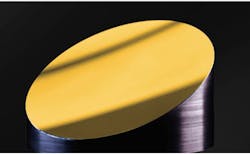Advantages and Complexities of Large Optics
Advantages and Complexities of Large Optics
In many advanced technological applications, the size of an optic can be the determining factor in its effectiveness. When a situation calls for a large optic, no smaller counterpart can substitute. This is particularly true in fields such as astronomy, where large optics are essential for high-resolution imaging, and in laser applications, where they help manage energy density. However, producing these large-scale optical components is far from straightforward. The costs do not just scale with size—they increase exponentially due to the complexities involved in their production.
Applications That Demand Large Optics
Large optical components, including mirrors, lenses, optical flats, and beamsplitters, play a vital role in several high-tech applications:
Astronomical Telescopes: The Quest for Clarity
Astronomical telescopes rely on large optics to achieve high angular resolution. A larger input aperture means more light collection, which is crucial for observing faint celestial objects. The increased light collection allows for shorter exposure times and minimizes the influence of noise, resulting in clearer images.
